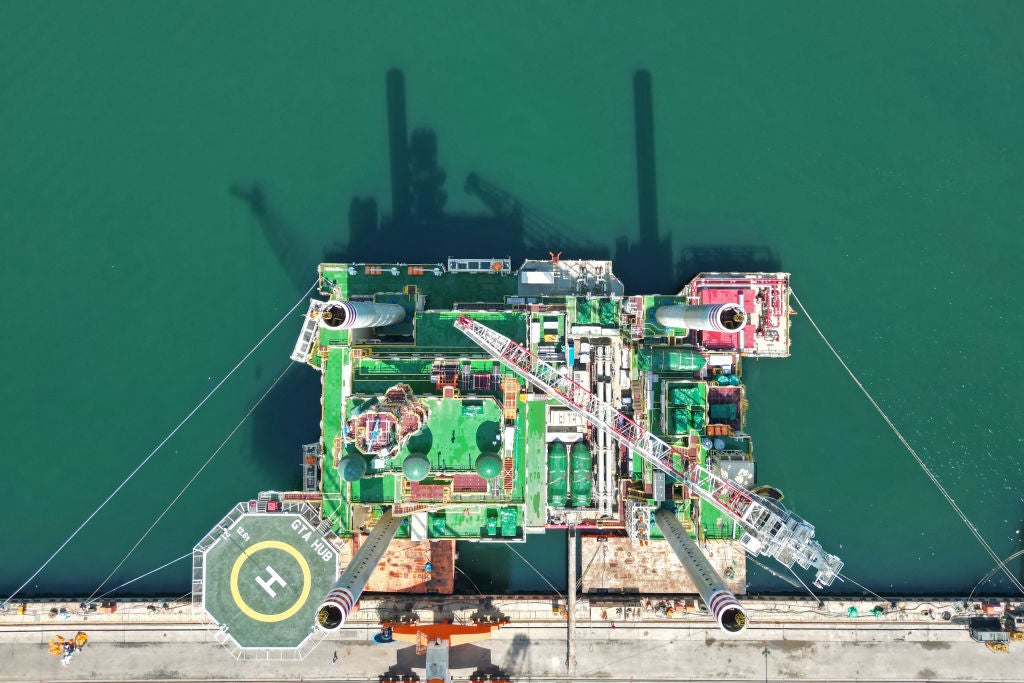Russia’s invasion of Ukraine triggered a remarkable recovery in crude oil prices. As the EU, US and UK all signalled their intent to move away from Russian fossil fuels, the price of oil crossed the $120 mark, the highest it had been in more than a decade.
Just four months previously, world leaders committed to reducing emissions by mid-century at the COP26 climate conference in Glasgow, seemingly confirming the long-term managed decline of global fossil fuel demand. Just under two years before the invasion, the world had witnessed oil prices dip below zero as demand evaporated during the initial Covid-19 pandemic.

Discover B2B Marketing That Performs
Combine business intelligence and editorial excellence to reach engaged professionals across 36 leading media platforms.

Suddenly, however, policy signals to the oil industry appeared rosy once again. The UK government released an energy security strategy that called for even more extraction from the North Sea, while US President Joe Biden went cap in hand to Saudi Arabia – until then, state non grata as a result of the murder of Jamal Khashoggi – asking the world’s largest oil producer to boost global supply further.
Six months after Russia’s invasion, the war in Ukraine is dragging on. Oil prices remain higher than they were before the start of the war, and significantly higher than they were throughout much of the Covid-19 pandemic. Data shows these buoyant prices have had far-reaching impacts on the fossil fuel industry.
Bumper corporate profits
For starters, recent weeks have seen oil majors report massive quarterly profits. Results announced by ExxonMobil, Chevron, Shell, BP and TotalEnergies revealed the companies collectively raked in just under $60bn over the course of a mere three months. This is around three times the equivalent figure for 2021.
Companies are increasingly directing profits towards share buy-backs and dividends: Chevron has boosted its annual buy-back plans to $10–15bn, up from $5–10bn, while Exxon aims to purchase $30bn worth of shares during 2022 and 2023.

US Tariffs are shifting - will you react or anticipate?
Don’t let policy changes catch you off guard. Stay proactive with real-time data and expert analysis.
By GlobalDataInvestment in new oil production, meanwhile, is deemed risky, given the impact of a future recession and climate policies on future fossil fuel demand. Data shows that while capital expenditure on new oil extraction is set to increase this year, it remains below 2019 levels.
Share buy-backs help boost share prices, and reduce pressure from investors. Last year, shareholders voted against management on climate change resolutions at Chevron and ExxonMobil, installing two independent members at Exxon and demanding that Chevron “substantially reduce” its greenhouse gas emissions.
The fact that both Exxon and Chevron shares are significantly up this year will reduce the likelihood of this happening in 2022.
Oil recovery: optimism across the industry
Sentiment analysis of corporate filings from GlobalData, Energy Monitor’s parent company, shows that the industry is unusually optimistic about its prospects at the moment.
The sentiment analysis provides an aggregated view of positive and negative sentiment within company earnings filings and transcripts. Specific words and phrases are assigned with a positive and negative indicator to assess how positive or negative the tone of writing is.
The analysis shows industry sentiment at its most optimistic since 2018.
Buoyant returns and an optimistic industry have seen oil companies invest more in the future operations of their businesses.
This trend can be seen in the number of job openings being advertised. Data from GlobalData shows the number of active job openings in the oil and gas industry has also increased fivefold since an initial dip following the beginning of the Covid-19 pandemic.
Climate and financial risk
In May 2021, the International Energy Agency said that no new investments should be made to develop new oil, gas and coal extraction projects if the world is to reach net-zero emissions by the middle of the century.
A buoyant oil industry, advertising new jobs and investing in new projects, means there is a risk that plans are in place to extract far more oil and gas than will be possible to have a climate-safe future.
[Keep up with Energy Monitor: Subscribe to our weekly newsletter]
The risk: either the world will end up with catastrophic, irreversible climate change – or companies will end up with billions of dollars of stranded assets as they realise they were planning for fossil fuel demand that was never realised.
A ‘high investment scenario case’ produced by the think tank Carbon Tracker in January suggested that rising oil prices could lead to oil companies ending up with $530bn of stranded assets this decade if demand starts to fall back and oil prices drop.
As data already alluded to above indicates, it does not appear that oil majors are massively ramping up investment in new production in response to high prices. However, the risk of stranded assets in the industry remains. Data from GlobalData shows that all the world’s major oil and gas-producing countries currently have plans to develop new oil and gas fields.
With talk of a global recession growing, and demand being forecast down, recent weeks have seen oil prices below $90, significantly less than the $120 peak recorded earlier in the year. This is good news for consumers grappling with a cost-of-living crisis – but should serve as a warning to the industry that most analysts anticipate the long-term direction of travel for fossil fuels remains downward, irrespective of any short-term boosts.





